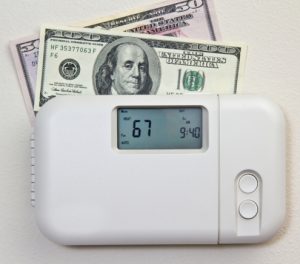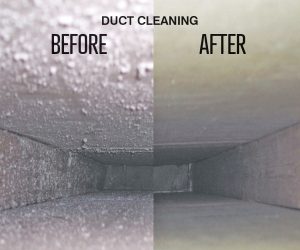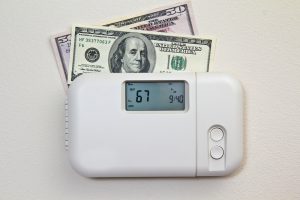HVAC FAQs
How often is HVAC repair necessary?
Heating and cooling experts recommend having your HVAC system serviced twice a year, once in the fall for your furnace and once in the spring for your air conditioner. You may have more success with scheduling if you aim for late summer and late winter when technicians are less busy.
Can you save money with HVAC replacement?
Replacing an old HVAC system with a new, energy efficient system can save you money in a variety of ways. Your energy bills will be lower, and you’ll spend less on repairs with a new system.
Do I need to replace my air conditioner if it uses R-22 refrigerant?
Refrigerant is the substance inside of your air conditioner that absorbs heat and creates cool air. Older systems used R-22 refrigerant, but it has been phased out of production. If your system uses R-22 refrigerant it would be a good idea to replace it since all HVAC contractors are now working on a limited and very expensive supply.
How often should you replace your HVAC filters?
At the very least you should replace the filters in your intake vents every 6 months. For better results replace them every 3 months. Filters prevent dirt, dust, and debris from getting into your HVAC system and reducing its efficiency.
What does SEER mean?
SEER stands for Seasonal Energy Efficiency Ratio, which is the measurement of how efficient an air conditioner is. A SEER of 14-16 is considered high efficiency and anything above that is even more efficient.
How does a heat pump work?
You may have heard that a heat pump is an efficient type of HVAC system. It works by transferring heat from one place to another. When it is cold outside, a heat pump pulls heat from the air, bringing it inside to heat your home. When it is warm outside, a heat pump gathers the heat from inside your home and transfers it outside. It is still a forced air system with vents that distribute air throughout your home.
Is duct cleaning necessary?
Air travels from your HVAC system throughout your home through the ducts. Over time dust and debris can get into the ducts and mold can form. It is good to have your ductwork cleaned yearly to keep your HVAC system clean and improve the air quality in your home.
Does your HVAC system control the air quality in your home?
A typical HVAC system with regular filters controls humidity and removes some particles from the air. But to make a noticeable improvement in your indoor air quality it helps to use high efficiency filters that are capable of removing more particles from the air. An air purification system is even more effective, killing pathogens and producing clean air.
What’s the ideal temperature to set your thermostat to?
If your goal is to save energy, the ideal temperature for your thermostat is 68 degrees Fahrenheit in the winter and 78 degrees Fahrenheit in the summer. Using fans and wearing warmer clothes can help these temperatures feel more comfortable.
What are the warning signs that my HVAC system needs to be replaced?
There are a few warning signs that indicate the need for HVAC replacement:
- Frequent repairs.
- Rising energy bills.
- Excessive noise.
- Tripping circuit breakers.
- Uneven temperatures throughout your home.
If you notice any of the above, your HVAC system may be on its last legs. Consider having it inspected to determine if replacement is necessary.
Still Have HVAC Questions? Ask Berico
The experts at Berico can answer any questions you have regarding your HVAC system. Call 336-273-8663 today to ask a question or schedule service for your heating and air conditioning system.


 It’s the homeowner’s biggest fear: HVAC replacement. Whether your system unexpectedly quit on a hot summer day or your latest inspection by your HVAC technician did not bring good news, the most common question is always about HVAC cost.
It’s the homeowner’s biggest fear: HVAC replacement. Whether your system unexpectedly quit on a hot summer day or your latest inspection by your HVAC technician did not bring good news, the most common question is always about HVAC cost. As a new homeowner, you will want to be proactive to make sure that your HVAC system is kept up and running as efficiently as possible. Failure to do so will likely result in higher costs for HVAC repair in Burlington or worse, result in a failure of a system that might otherwise have given you years and years of great service.
As a new homeowner, you will want to be proactive to make sure that your HVAC system is kept up and running as efficiently as possible. Failure to do so will likely result in higher costs for HVAC repair in Burlington or worse, result in a failure of a system that might otherwise have given you years and years of great service. While it is easy to forget all about the air ducts in your home, these play a vital role in the operation of your HVAC system, but when the air ducts are dirty it can have a deleterious effect on the quality of air in your home and the operation of your HVAC system. That’s why a really thorough cleaning of the ducts can quite literally improve your life.
While it is easy to forget all about the air ducts in your home, these play a vital role in the operation of your HVAC system, but when the air ducts are dirty it can have a deleterious effect on the quality of air in your home and the operation of your HVAC system. That’s why a really thorough cleaning of the ducts can quite literally improve your life. Spring is a beautiful time of year. The birds are chirping, the flowers are blooming, and the grass is getting greener. But if you have allergies, the blooming flowers are not your friend. Yellow pollen blows on the breeze and settles on every surface. It even finds its way into your home.
Spring is a beautiful time of year. The birds are chirping, the flowers are blooming, and the grass is getting greener. But if you have allergies, the blooming flowers are not your friend. Yellow pollen blows on the breeze and settles on every surface. It even finds its way into your home. As the weather has gotten warmer, you will find that you’ll need to turn on your air conditioner more often and soon it will be running almost constantly. Are you confident that your AC will operate properly? You may not know until you need to use it, and then you could find yourself in need of repair. Sometimes when your air conditioner sits unused for a few months, it can get a bit rusty, metaphorically speaking and sometimes literally. A tune up and thorough cleaning may be all that is needed to have it working efficiently, but in some cases an actual repair may be required to get it functioning properly.
As the weather has gotten warmer, you will find that you’ll need to turn on your air conditioner more often and soon it will be running almost constantly. Are you confident that your AC will operate properly? You may not know until you need to use it, and then you could find yourself in need of repair. Sometimes when your air conditioner sits unused for a few months, it can get a bit rusty, metaphorically speaking and sometimes literally. A tune up and thorough cleaning may be all that is needed to have it working efficiently, but in some cases an actual repair may be required to get it functioning properly.